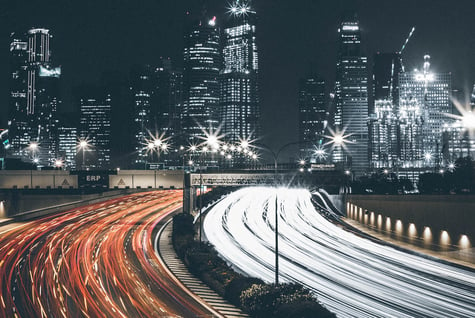 The American Medical Association (AMA) released a publication in 2016 entitled Guidance to Reduce Harm from High Intensity Street Lights, which makes recommendations about outdoor lighting sources that emit light with short wavelengths. This publication specifically focuses on the replacement of traditional lighting methods with light-emitting diodes (LEDs).
The American Medical Association (AMA) released a publication in 2016 entitled Guidance to Reduce Harm from High Intensity Street Lights, which makes recommendations about outdoor lighting sources that emit light with short wavelengths. This publication specifically focuses on the replacement of traditional lighting methods with light-emitting diodes (LEDs).
The health issues raised by the AMA are complex, since they’re based on new science and technology, and are often misunderstood, which can result in confusion about the risks posed by blue light. This post clarifies the ongoing discussion regarding the use of blue LEDs in street lights.
Overview
Within the context of health effects, the term “blue light” refers to light with a short wavelength within the visible spectrum, rather than light of a particular color. The wavelength range of this light is generally between 424 and 500 nanometers, although individual sources specify narrower ranges within these values. Light with wavelengths within this range has colors inlcuding indigo, violet, blue and cyan. It’s therefore important to define the specific wavelength range when discussing “blue light,” since the health effects of light are determined by its wavelength rather than its perceived color.
Street Lights
LEDs are becoming a standard source of light for outside illumination, especially street lighting. White LEDs have been in use for electronic devices since the 1960s, although LED street lighting has only been in use since the 1990s. Early LEDs had a poor cost-to-performance ratio that prevented their widespread use for general lighting, although this situation changed quickly when their prices began dropping. The LED Market Adoption report published by the Department of Energy (DoE) in 2013 estimated that 200,000 LEDs had been installed in streetlights as of 2010, with that figure increasing to over one million by 2012.
Traditional streetlights have typically used high-pressure sodium (HPS) lamps. These lights are usually in the yellow range, which has a longer wavelength than blue light. The replacement of HPS lamps with LEDs has given rise to concerns over the increased use of light with short wavelengths, especially at night. However, modern LED technology and careful attention to engineering fixtures with these concerns in mind has led to an improved version of LED street lights. Further improvements have been made in the form of dimming strategies and are becoming a common method of addressing these concerns. For example, the Department of Energy reports that Cambridge, MA dims its LED streetlights by 50 percent after midnight.
While the LEDs in streetlights are typically blue, it’s important to note that LEDs can be engineered to emit light of any desired color with no significant difference in cost. This capability allows LEDs to match the application requirements more precisely than traditional light sources. For example, specialized LEDs with adjusted temperature and output are currently used outdoors in areas that harbor endangered species who are strongly affected by light with short wavelengths.
Health Concerns
AMA guidelines assert that common sources of blue light generally pose no risk of physical damage to the eyes. The AMA’s health concerns regarding blue light primarily relate to its effects on melatonin levels. Its findings show that light generally suppresses the production of melatonin, which reduces the body’s internal representation of the duration of night. Light at night therefore has the potential to affect circadian rhythms, regardless of wavelength.
However, internal lighting from the home or office is the primary source of concern for this issue since we typically receive much more exposure to this type of lighting. Most people just aren’t exposed to street lighting for the length of time needed to affect their circadian rhythms.
Other concerns lie in the glare caused by LED street lighting. Early versions of LED required temperatures of over 4000K in order to achieve the necessary lighting for roadway conditions. At this magnitude, disability glare (introduction of stray light into the eye reducing the ability to resolve spatial detail) was an unfortunate byproduct. However, as technology has improved, LEDs can now provide adequate roadway lighting at a temperature of under 3000K. This eliminates the harsh glare caused by earlier renditions and now actually provides an improved lighted environment over the incumbent high-pressure sodium lamps.
Conclusion
Blue light is a fundamental component of visible light that provides safety and aesthetic benefits. It generally makes colors at night appear more similar to daylight colors, which facilitates the identification of objects such as people and vehicles. Blue light also increases the contrast between objects and their surroundings, making it easier to see debris in the road. Furthermore, blue light enhances peripheral vision at low levels of illumination, which is especially helpful for street lighting. Recent research has identified additional benefits of blue light for outdoor viewing tasks such include improvements in reaction times and detection thresholds at typical street lighting levels. All these benefits, on top of the massive energy savings, add up to safer driving environments that far outweigh any concerns about affects to our circadian rhythms.
>>There's more to LED Lighting than just energy savings! Learn more about LED Lighting Benefits>>


